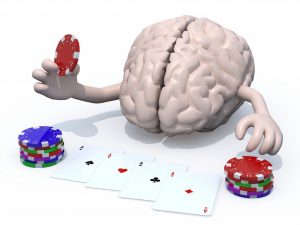
There are two primary considerations in poker decision-making: strategy and psychology. What is the difference between them? On reflection, we can feel the difference, but it is hard to put into words. How could it be defined?
In simple terms, strategy is a good primer, and psychology is about understanding what goes on in people's heads. It is a good start, but we could do better.
Yes, psychology studies what goes on in people's heads, and the reason why we want to get inside other people's heads is because we want to predict their game tactics. Strategy allows us to exploit the decisions of others, whereas psychology allows us to predict them in the first place. You cannot exploit a player if you do not know what he is going to do. But just knowing what your opponent is going to do doesn't guarantee that you can make the most of it.
In short, strategy is static, algorithmic and unstable, and psychology allows us to predict and anticipate strategy and its changes based on observation. Neither strategy nor psychology can exist without the other.
We can narrow down the role of psychology in poker even further. In previous articles, we have talked about how to match bluff and valuebet ranges. You might have concluded that the valuebet and bluff frequencies are basically the same and that to manipulate them you just need to increase one and decrease the other. In reality it is a bit more complicated than that.
Saying that your bluff frequency is 0% is just another way of saying that even when you have the opportunity to bluff, you don't take it. Almost always, in a given situation, you will have hands to bluff with. So to say that the bluff frequency is 0% is to say that you refuse to bluff. On the other hand, if the valuebet frequency is 0%, it means that you have no value hands in that situation. When you have a value hand, you don't have to decide whether to valuebet or not, you always do, for example when you have a set or top pair (excluding thin value bets).
Let's say you want to modify your balance at a certain point. You can change the bluff frequency quickly, as this frequency is more or less a matter of choice. It is local. You can simply decide to bluff more in this situation and then just take action, there are no external factors to consider. However, if you wanted to increase the number of value bets, you couldn't just take it and do it. Remember the "wood pile" (which you got to build your poker ship), your resource of good hands. They are finite and limited. If you don't have any with you at the moment, you'll have to "take wood" from somewhere else and redistribute what you have. So  The increase in value betting frequency is not local, it's systemic, as you have to make changes elsewhere in your game to get the resources you need. You have to remove those hands from somewhere else in order to use them here.
The increase in value betting frequency is not local, it's systemic, as you have to make changes elsewhere in your game to get the resources you need. You have to remove those hands from somewhere else in order to use them here.
We can also use this observation to highlight the difference between psychology and strategy. When we change our strategy, we need to make systematic, large-scale changes to our game in order to exploit our opponents. But for psychology, internal, localised solutions are enough. Psychology tends to concentrate on bluffing, because that is where decisions are made moment by moment. Value betting is more a matter of large-scale strategy and range construction.
Of course, it's all very simplified here, technically speaking, sometimes your range is so strong in a certain spot that you absolutely need to add some bluffing or thin value bets etc. Despite all this simplicity, this way of thinking is useful for every player.





